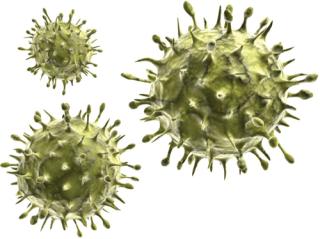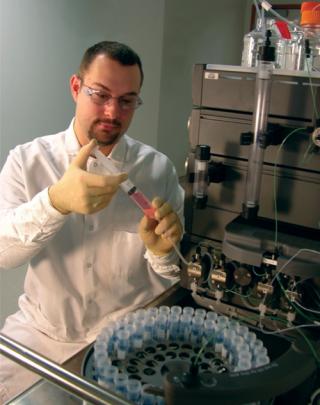Flexibility has been the key driving force behind the success and growth of Eurofins Lancaster Laboratories’ viral clearance program.
“When we introduced four levels of service solutions for viral clearance studies, our clients responded well,” says Dr. Kate Bergmann, manager of viral safety and clearance. “They appreciate that we can tailor our program to meet their specific needs. They can use any of our service levels to address all their scientific, safety and scheduling challenges.”
To provide additional capacity, the group is expanding to include four additional viral clearance suites. This growing capacity — along with four flexible service models — enhances the client’s experience and provides significant time and cost savings. Here’s why:
Viral clearance studies are a critical element toward ensuring that an acceptable level of viral safety has been achieved for biological products. The goal of these studies is to demonstrate that the manufacturing purification process has the ability to inactivate and/or remove viruses that are known to contaminate or which may possibly contaminate the starting materials, as well as additional viruses that are models for a broad variety of viruses. Viral clearance studies provide a complementary strategy to direct testing of cell banks, raw materials and bioreactor harvests, which may not detect all viruses that could potentially contaminate the product.
In the viral clearance study, individual processing steps in the manufacturing process, such as column chromatography, solution inactivation, and virus removal filtration steps, are tested individually to evaluate their ability to remove and/or inactivate viruses. Viruses are selected based upon a risk analysis of the production process; including factors such as the origin of the cell line and the stage in clinical trials. The process steps are scaled down from manufacturing-scale to bench-scale. The input material for each step is spiked with high-titer virus and then processed through the step. Input and output samples from the step are collected and quantitatively assayed for virus. The difference in the amount of virus spiked into the step and that found in the output sample represents the amount of virus cleared by the step.
Because manufacturers cannot bring virus into their manufacturing facilities due to the risk of facility contamination, viral clearance studies are almost always outsourced to companies such as Eurofins Lancaster Laboratories. Performance of a viral clearance study has typically involved the hands-on participation of the client. In the most common scenario, client personnel travel to Eurofins Lancaster Laboratories and perform the study in our labs. Our personnel and client personnel work side-by-side to set up the studies, spike the steps with virus, and collect the samples for analysis in the virus testing laboratory.
Four Service ModelsA small study might require the client to be present for a week, whereas a large study could require two weeks or more of client participation. The time that clients spend in the viral clearance lab equates to time spent away from their manufacturing responsibilities. Eurofins Lancaster Laboratories is aware that sending client personnel to perform the viral clearance studies can be an inconvenience for many clients due to a shortage of personnel, lack of time and travel costs. To provide additional options for the client, Eurofins Lancaster Laboratories offers these four viral clearance service models:
Level 1 — Basic Service: The client provides all materials and down-scale procedures and performs the study in Eurofins Lancaster Laboratories’ viral clearance suites.
Level 2 — Enhanced Service: The client provides all materials and down-scale procedures and performs all column chromatography steps. Eurofins Lancaster Laboratories personnel perform inactivation and virus-removal filtration steps.
Level 3 — Full Service: The client provides all materials and down-scale procedures for transfer to Eurofins Lancaster Laboratories personnel, who perform all clearance steps.
Level 4 — Turnkey Service: The client provides a description of the full-scale manufacturing process. Eurofins Lancaster Laboratories personnel develop and validate the down-scale procedures and perform all clearance steps.
Viral Clearance ProgramOur viral clearance program includes the following:
-
Multiple virus clearance suites
-
Multiple ÄKTA chromatography systems
-
Capacity to accommodate studies with minimal delay
-
Variety of validated and well characterized viral stocks to support animal and human-derived products
-
Viral stocks with titers of 107 pfu/mL or greater
-
Purified virus stocks
-
Validated viral infectivity and quantitative polymerase chain reaction (qPCR) assays
-
Infectivity assays performed in real time
-
Large-volume assays for increased sensitivity.
Viral clearance customers rely on us for the following:
-
Highly qualified staff with over 70 years of cumulative experience
in the industry and thousands of studies performed -
Ongoing program improvements, such as additions to our virus panel, including new/emerging viruses; improvements in virus assays; and improvements in virus stock titer and purity
-
Experience with “unusual” products, including plant- and tissue-derived products
-
Ongoing regulatory support during study design and performance and after completion
-
Cleaning validation studies to quantify the elimination of viruses during the cleaning procedures used at your manufacturing facility
-
Collaboration with the industry to evaluate and improve new technologies for viral clearance.
For all stages throughout the development, manufacturing, and release of your biological product, Eurofins Lancaster Laboratories offers comprehensive viral clearance services in full compliance with current good manufacturing practice (CGMP). For more information, please visit our web site (www.lancasterlabspharm.com) or contact one of our business development representatives by emailing pha@lancasterlabs.com.
Author Details
Kathryn Butler-Millar is director of biopharmaceutical business development, 2425 New Holland Pike, Lancaster, PA 17601; 1-717-208-1464;




